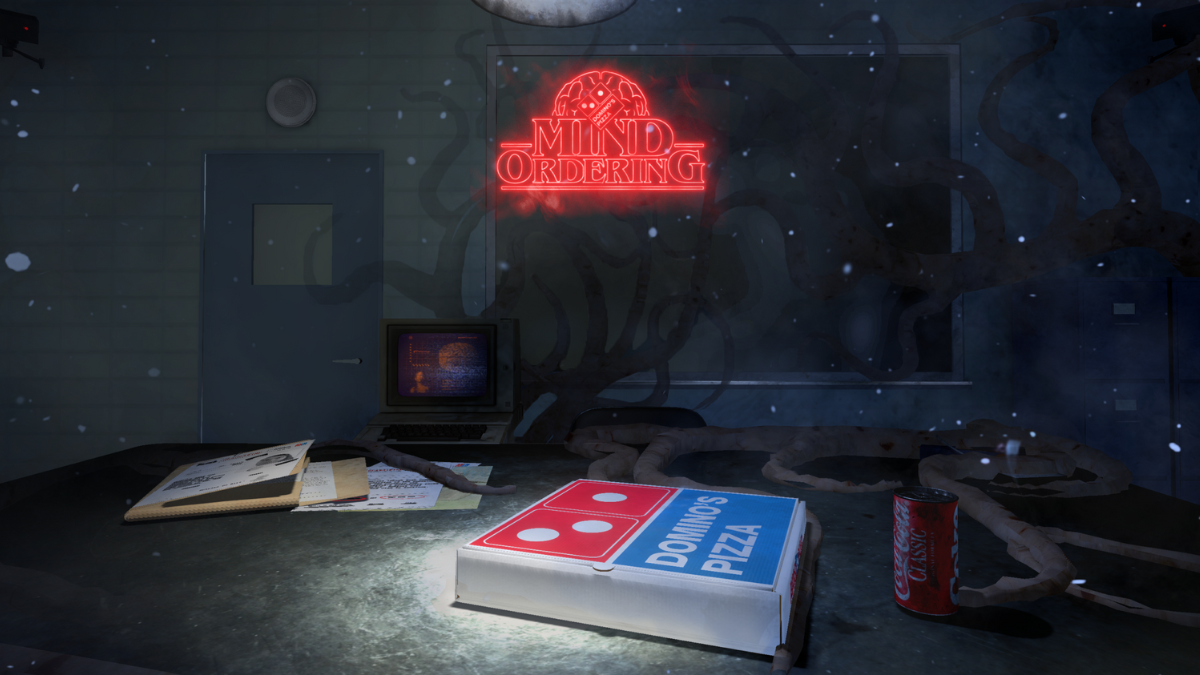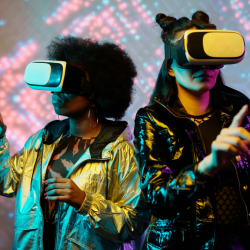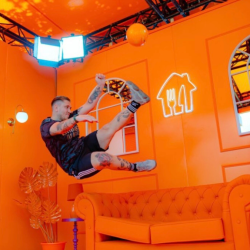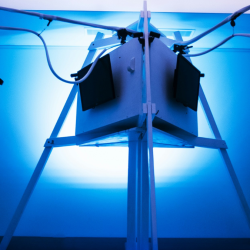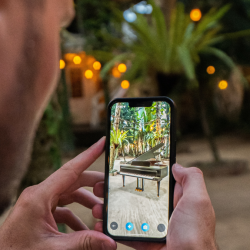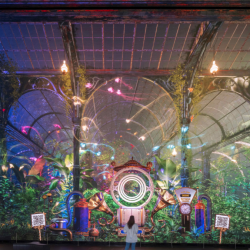People have always enjoyed being transported out of their everyday lives, but now more than ever they’re craving magic in the mundane
A radical rethink of everyday experiences is needed in order to make them engaging again — and there’s a huge opportunity for brands to deliver it, using immersive technologies to ensure these experiences are ‘fit for purpose’ for the modern consumer. When we were young, our imaginations instinctively led us on journeys. Even the most nondescript daily situations could be reimagined through an exhilarating lens; a bus could become a rocket ship bound for outer space, while a toothbrush could be a superhero defending off evil plaque. As we grew older the dullness of adulthood descended, and many of us lost this ability to find wonder in the everyday; but we never lost the desire to be transported.
In fact, now more than ever after the ‘not so fun’ years we’ve collectively experienced, audiences are showing a yearning desire to rediscover magic and emotion in their day-to-day. According to a global survey by Wunderman Thompson, 60% of consumers are seeking more excitement in their lives — but 70% can’t remember the last time a brand excited them. The same old clearly won’t cut it anymore — but by utilising immersive technologies, brands have the power to elevate the everyday experiences that many take for granted.
Driven by innovation, we’re already seeing some brands employ this approach, utilising virtual world-building, augmented reality, game mechanics and more to inject some joy and fun back into the mediocre and mundane.
Pretty much everyone has ordered pizza in their lives
Some may know their local number by heart. But how many can say they’ve ordered pizza with their minds? Reinventing the food ordering experience, Domino’s recently launched a first-of-its-kind mobile activation with a twist — ‘telekinetic’ ordering through the lens of partner Netflix’s Stranger Things.

As well as immersing users in a 3D representation of the show’s Hawkins Lab, the app integrated facial tracking to create a hands-free ordering experience that mimicked the mind-controlling powers of main character, Eleven. By cleverly using technology to pique interest and put the user in control, Domino’s were able to make sure their audience was fully engaged — and with surprising Stranger Things Easter eggs popping up throughout, they were able to keep them on the edge of their seats too.
Creating this type of universe for audiences to get lost in is a great tactic for boosting excitement and discovery
Canadian cafe chain Tim Hortons looked to the daily grind of their customers as a source of inspiration for Tim’s Speed Run, a virtual world experience where a daily staple (of the coffee run) is transformed into a Roblox obstacle course. The game features all of Tim’s customers’ favourites — donuts, bagels, Timbits and, of course, coffee — represented in the environments and infused into the mechanics of the gameplay. The result is an experience that breathes new life into the familiar through a new virtual interpretation of the brand’s products.
As well as product discovery, virtual worlds can also help audiences explore other new passions — including music. Launched last month, Coke Studio’s Real Magic Record Store reinvents the core listening experience of a song. Tapping into the notion that 68% of consumers prefer to spend time in places that spark their imagination, the immersive web experience transports audiences into a variety of 3D environments, each one inspired by an artist on the collaborative track. Through integrated game mechanics, they are then tasked to bring the various musical components of Coke Studio’s Be Who You Are track together by completing artist-themed challenges.
This allows for an entirely new way to appreciate the full song in all its intricacies, by playing an active role in its composition.
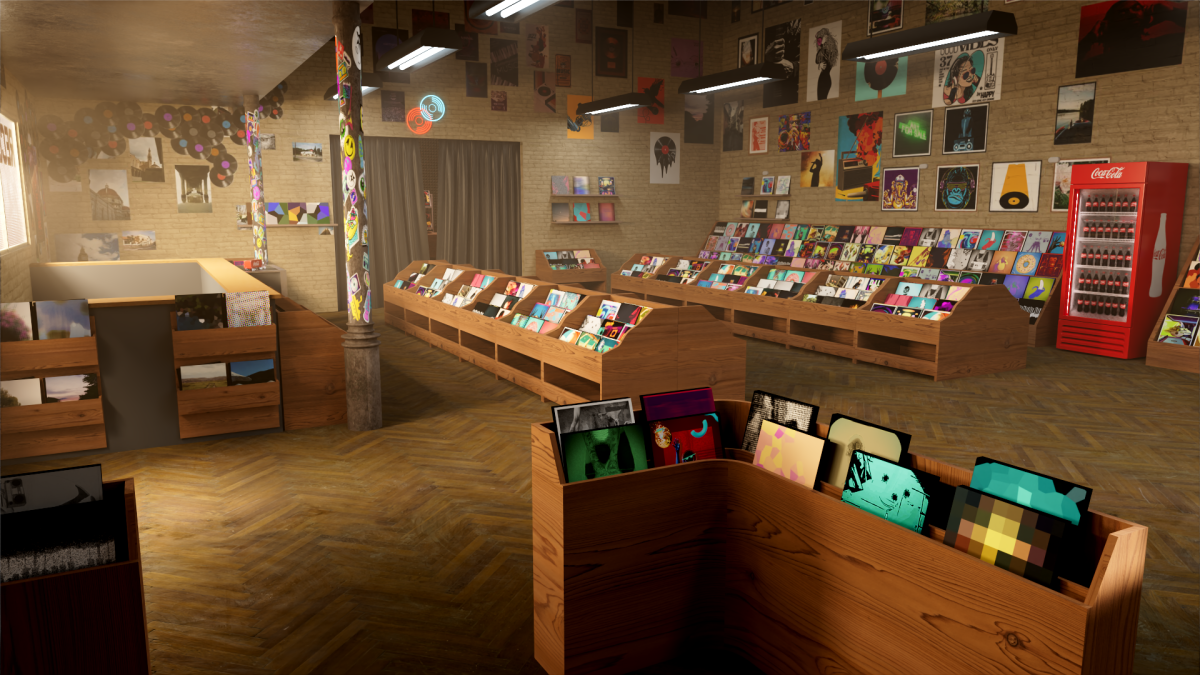
Other brands are also exploring gamification as a key way to turn up the fun of familiar experiences — and with mobile gaming now accounting for 52% of global gaming industry revenues, the appeal of casual smartphone games amongst today’s audience is clear. Marriott has experimented with gamified hospitality in its Moxy hotels, enhancing the chain hotel experience by launching an AR experience that gives guests a chance to win prizes by exploring the hotel with their smartphones. With digital avatars adding an extra layer of customisation, this type of experience is a great way for the well-known hotel chain to build a more personal connection with guests.
It’s a shame it was only live for a few months — an ongoing activation would be a great reason to keep guests coming back for future stays.
At the same time as injecting fun, brands should remember that AR can also provide a helpful service, elevating the everyday more than one way
Trying to find your way around an unknown city or new location is a bit of a drag, but squinting at written directions can be a thing of the past thanks to new AR technology that’s bringing the world to life around us for simple, easy and enjoyable navigation. The Singapore Tourism Board has recently used Google’s new ARCore Geospatial API to create two immersive tour experiences, with digital content anchored to physical locations to help guide visitors around the city.
The Smithsonian Institution’s National Museum of Asian Art has played with a similar idea as part of its current Anyang exhibition, eliminating the tedium of getting lost by helping guests find their way around the exhibits with playful AR characters.
There’s a huge opportunity here for brands to reimagine the everyday experiences that many find mundane or mediocre and reignite that spark of discovery amongst audiences. By harnessing immersive technology, we can bring some of that childhood imagination back into people’s daily lives to add value, and help forge deeper connections with an audience that’s on a constant quest for the new.
Featured image: Domino’s mobile activation / Netflix’s Stranger Things




















